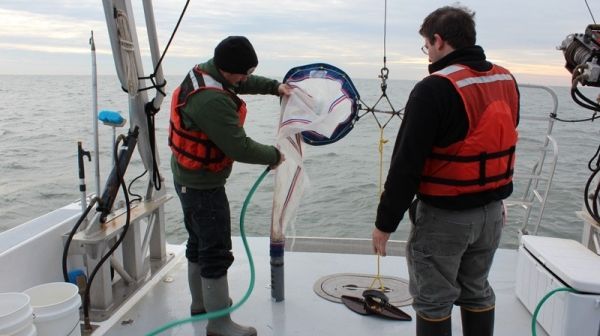Every year, about 8 million metric tons of plastic are put into the world’s oceans. Of particular concern are microplastics, materials found in the marine environment that occur in sizes below five millimeters and are the most abundant form of marine debris observed at the ocean surface.
Estuarine and coastal environments play a crucial role as a buffer between land, freshwater environments and the open ocean where plastic debris accumulates. Despite performing this critical function, estuarine and coastal environments have not been extensively studied for microplastic prevalence and impact.
To help better understand how these environments are affected by microplastics, University of Delaware researchers looked at microplastics in the Delaware Bay, which is a tide-, wind- and freshwater-driven estuarine environment.
They discovered a substantial concentration of microplastics in the Delaware Bay that accumulate in hotspots driven by buoyancy, winds and tides, all of which lead to high variability of microplastic distributions (across space and time) in the bay.
Continue reading at University of Delaware
Image via University of Delaware


